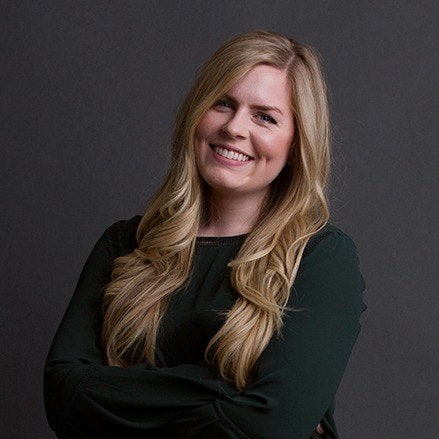From increasing brand visibility to generating leads, paid media has become a go-to for many marketers. The results are exciting. There are tons of targeting options to find the perfect audience. And traffic comes pouring into your website.
So, what could go wrong?
While paid media has the potential to drive some incredible results for your marketing team, adding it to the mix can cause some unforeseen problems, if you’re not careful. Here are just a few situations that come to mind.
- Paid campaigns weren’t considered in the overall marketing strategy, and now campaigns contradict other marketing efforts.
- Paid campaigns are rapidly improving in terms of lead volume but you can’t figure out why the leads aren’t converting to sales.
- Time and money are spent on getting amazing creative assets produced, but they don’t make sense for the goal of the paid media campaigns or the audience.
- Paid performance stalls because other marketing efforts weren’t planned or budgeted to support the campaigns.
- Data was lost due to inaccurate tracking, so paid optimizations are limited due to inaccurate data.
If you’ve ever experienced one of these issues, it’s most likely because your paid efforts are existing within a silo.
I write this enthusiastically because paid media actually relies on multiple resources, often in the creative and digital realm, to perform effectively. We’ll often run into roadblocks when paid advertising is chosen as a last-minute solution for lead gen instead of a long term strategy.
The good news is most of this can be avoided by incorporating paid media into your overall digital marketing strategy from the beginning. So remember these key—and often forgotten—pieces that are vital to the success of your paid media campaigns.
So, what does paid media need in order to be successful?
In comparison to other marketing efforts, paid media campaigns can be a fast way to drive valuable targeted traffic to your site and generate leads, but it’s not a quick fix. Digital paid media campaigns require a lot of preparation in the form of tag implementation, reporting setup, and content strategy, among other things. And don’t forget that creative assets need to be produced. Once launched, time must be invested in optimizations, then down the road you’ll need other digital and creative services like conversion rate optimization and creative refreshes to fuel your campaigns and to see continual improvement.
That’s a lot of moving pieces!
Make sure you have a decision maker
Whether you have an in-house paid media team or you are working with an agency, you need a solid understanding of your business’s goals in order for your team to be able to make smart optimizations and strategic decisions.
Sometimes it takes your paid media team years to learn these valuable business insights. That’s why it’s important to have at least one point of contact or decision maker with a great understanding of how the business operates—everything from the ins and outs of the sales process to the nuances of the target audience. This person needs to be accessible and able to give feedback to guide the team in the right direction and set them up for success to execute on your goals.
Which brings me to my next paid media need…
Work with a goal in mind
As with most things in life, successful paid media campaigns start with a plan! Each paid media campaign—nay, each piece of content you decide to put money behind—requires a goal.
This is not just because goals and KPIs are nice to have, you actually literally need a goal in order to optimize your campaigns.
Your goal for each campaign will really affect how you optimize the campaign and the decisions you make that ultimately affect the outcome. You just cannot have a goal of awareness and lead generation. Lead generation may be a side effect of running awareness campaigns, but your campaigns have to be optimized toward only one goal. This is because of how the platforms operate.
For example, if you create a Facebook campaign with reach as the goal, Facebook’s algorithm will try to put your ad in front of as many people as possible who are relevant to your target audience. If you chose conversions as a goal, Facebook will look for people within your target audience who are more likely to convert on your landing page.
If you have different goals—or multiple conflicting goals—you’ll create different outcomes.
Ensure you have a solid understanding of the site and accurate tagging
Imagine driving a car blindfolded.
That’s what it can feel like to manage paid campaigns without accurate tagging in place. Tagging, reporting, and tracking are three words that should come to mind first if you’re thinking of spending money on paid advertising.
The more data you have available, the easier it is to pull valuable insights and make optimizations that impact the overall success of your paid efforts.
And if you don’t understand the site’s structure, it’ll make conversion tracking very difficult. Conversion tracking is very technical, and it can easily become overwhelming if you’re not organized. That’s why it’s important to have an outline of every possible conversion point on your website.
Conversion tracking is also an ongoing part of managing campaigns. Even if tagging has been set up once, you’ll have to dive in every time a new piece of content needs to be launched.
Paid media campaigns need content made for digital
Targeting, budget, and optimizations get your ads in front of the right people. Creative gets them to engage with your brand.
It is vital that the images and copy you use in your advertisements are created with a digital mindset. What I mean by that is that they’re created with the platform in mind. Don’t create your assets first and think about how you’ll promote them later. Content that performs well in traditional media won’t always work for digital, and vice versa.
Creating content for digital ads can be a complex task because you not only have to make stand-out content, you’re also trying to play by the rules of the platform. Creative plays a huge role in the auction across platforms and can significantly impact your performance. Each platform has different creative guidelines, and they’re constantly changing.
Think about your overall content marketing strategy
Part of the reason paid media has exploded is because it can drive targeted traffic to your website. But if you don’t have engaging or helpful content once they get there, all that traffic is wasted money.
For paid media campaigns to be successful, you really need to think about the content on your site. What do you have to offer? What message are you trying to convey? What action do you want your audience to take?
A good place to start is to make sure you have solid pieces of content for each stage of the marketing funnel. Content offers that you use for your prospecting campaigns aren’t likely suited for your retargeting campaigns. You won’t see much success asking people in your prospecting audiences, who have never heard of your brand before, to request a demo. You’d be better off sending them to download a free brochure to learn more about your product or offer.
Paid media can help get your website in front of people. But it can’t compel and convert on its own. It needs great content and a strategic plan.
Figure out what you want to say
Even the biggest budget or best targeting won’t help if you don’t have a solid message to start with. Make sure you’re being clear about what you have to offer to your audience and be consistent across all touch points. For example, your ad messaging should always match the landing page where you’re sending traffic. If users click through your ad expecting to see RV models but instead they get a landing page with minimal information and a form, they’ll likely leave quickly without converting.
Consistent messaging is also essential because your target audience may interact with your ads on multiple platforms. You’ll notice that people who see your Facebook ads will head to search and convert on your search ads. Consistency and a clear call to action will make it easier for them to recognize your brand and take action.
Have an optimization plan
Digital marketing is all about optimization. And when it comes to paid media, if you’re spending money to send traffic to your website or content offer, failing to test is a missed opportunity.
To make sure you’re getting the most bang for your buck in your paid media campaigns, make sure you’re strategically testing ways to improve your conversion rate. You might even transform a good campaign into a great one.
Know what’s happening next
Finally, to ensure your paid media efforts are ultimately beneficial for the bottom line, you need to know what happens next—whether that’s a sales follow-up, lead nurturing, retargeting offers, or something completely different. For us, we like to build out a campaign blueprint before we launch a campaign. That way, everyone involved can easily understand the role paid media plays within the bigger picture that is your overall marketing strategy and plan.
Greater than the sum of its parts
Digital marketing is a potent tool. But it isn’t nearly as potent on its own as it is as part of a larger system of marketing. Make sure all the bits and pieces of your marketing work together—but also make sure they’re well suited for the jobs they need to do. Don’t jam an analog peg in a digital hole, or vice versa. That way, the whole of your marketing can truly become greater than just the sum of its parts.





